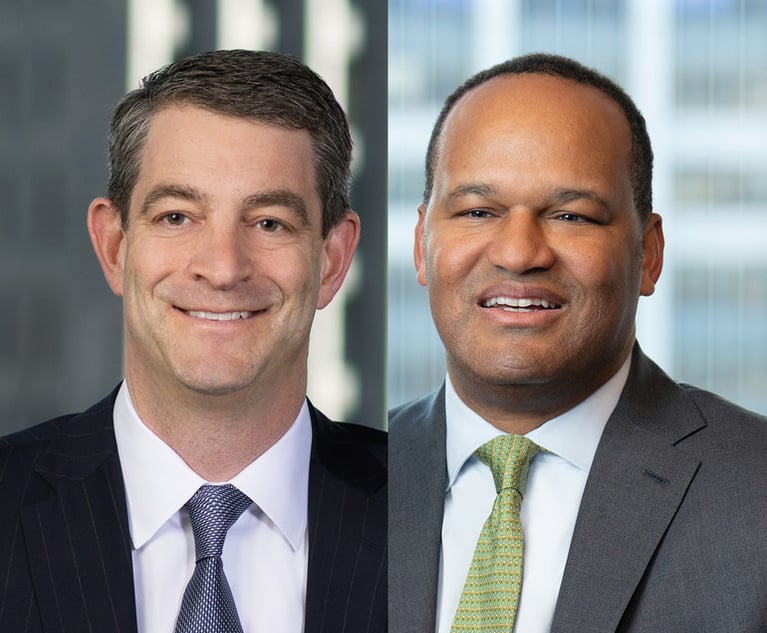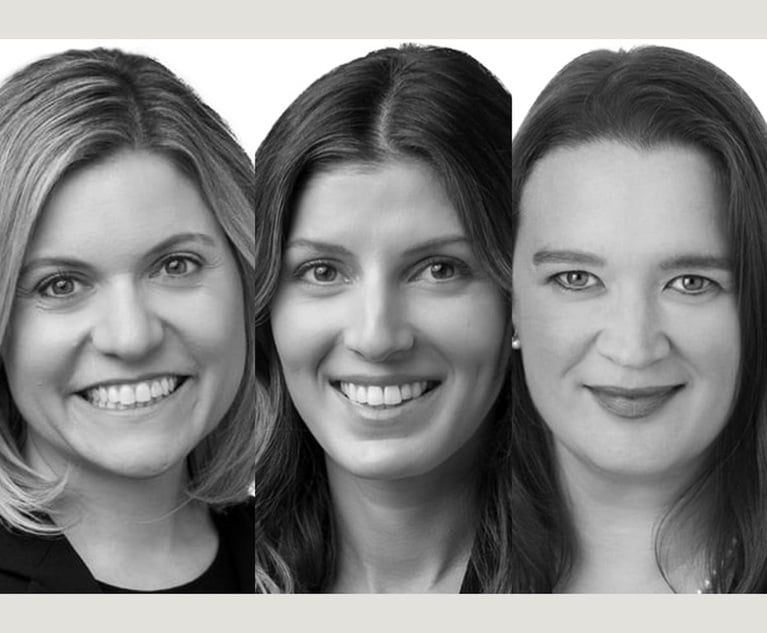'Alpha Dog' Still Rules as Quinn Emanuel Sees Growth and Partner Exits
In a year punctuated by prominent partner departures, John Quinn says his firm's bare-bones management structure remains a virtue—and succession planning is for suckers.
October 18, 2018 at 04:32 PM
13 minute read
 John Quinn of Quinn Emanuel Urquhart & Sullivan. (Photo: Jason Doiy / ALM)
John Quinn of Quinn Emanuel Urquhart & Sullivan. (Photo: Jason Doiy / ALM)
A lot has changed since a quartet of litigators came together to form Quinn Emanuel Urquhart & Sullivan 32 years ago. From a handful of lawyers in Los Angeles, the firm now boasts 22 offices on four continents, with 800 attorneys generating more than $1 billion in annual revenue.
One thing that hasn't changed much? The role of John Quinn, the firm's co-founder, managing partner, and in his words, “kind of a cheerleader.”
He's the chief recruiter and a key business developer. He helps to resolve business and client conflicts. He's at the center of determining partner compensation, and he has a central role in billing and pricing decisions.
The firm's management structure—with a lone managing partner at the top and no management committee—has carried over from when it had fewer than 100 attorneys.
“As a business, a law firm is really a very simple enterprise,” Quinn said. “Law firm management is a misnomer.”
Quinn, 67, said he has no plans to change the firm's structure or to step down, and he isn't worried about who may eventually replace him. Succession planning, he said, is “an example of superfluous business school-speak that adds nothing.”
It's a remarkable posture for a billion-dollar-year global business with hundreds of partners and employees. But Quinn Emanuel has always billed itself as a unique enterprise, validated by rising profits, a growing partnership and a role in countless major litigations.
Now that model is being tested. This year a number of prominent partners left to join other firms or start their own, and some litigators privately wonder whether the thin leadership structure that helped the firm flourish may now be a weakness. How much can it grow without delegating more authority throughout the partnership? What happens when Quinn is no longer its leader?
Could Quinn Emanuel become, to some extent, a victim of its own success?
'Bare Bones' Administration
The recent exits include a 10-partner spinoff, Selendy & Gay, whose partners are locked in litigation with Quinn Emanuel over a controversial provision of the firm's partnership agreement. A second group, led by Sheila Birnbaum and Mark Cheffo, joined Dechert over the summer. And one of Quinn Emanuel's best-known litigators, Susan Estrich, announced this month she was leaving for Boies Schiller Flexner.
Birnbaum, without criticizing the firm, said Quinn Emanuel has a “different style” than a firm like Dechert, which she said was more accommodating to her practice. She cited its support in management, administration and handling pitches and said Dechert also has a larger marketing department.
Having a firm “with much more structure was a big plus in moving back to a traditional corporate and litigation firm,” she said.
Quinn acknowledged that Birnbaum and Cheffo were “used to a more corporate-style firm, which has layers of administration and support that we don't have.” He added that Quinn Emanuel has “always been from an administrative standpoint, pretty bare bones.”
“Part of the reason we do so well is that we don't have the administration apparatus or overhead that other firms have,” he said, noting the firm's high profit margin.
The Dechert group was also sensitive to conflicts between its defense-oriented products liability practice and Quinn Emanuel's plaintiffs-side practice, he said.
But Quinn doesn't see the moves as any reason to change. He said Birnbaum and Cheffo's departures partly validated a concern about bringing on a large group of lawyers at once. “They came as a group and they left as a group,” he said. “Lo and behold, we didn't integrate them.”
As for the Selendy and Gay departures, Quinn said he believes the attorneys “want to have the fun of starting their own firms,” even as the moves came as a surprise. “We were frankly shocked,” Quinn said.
Gay and Selendy, who now run a firm with nearly 80 lawyers, declined to comment. They have previously said they wanted to have “complete autonomy” to rethink the traditional law firm model and their new firm will be “profoundly collaborative” with a “tight-knit, single-office culture.”
'Bigger Still'
Quinn Emanuel's growth—all without a major merger—has shown few signs of slowing. In the last two-and-a-half years, the firm opened new offices in Boston; Zurich, Switzerland; and Stuttgart, Germany.
“We are already larger than we were before the departures this year. We will be bigger still by the end of the year—with quality hires,” Quinn said.
The firm has added several prominent laterals this year, including former Acting U.S. Attorney William Weinreb and former Ropes & Gray partner Harvey Wolkoff in Boston; Bobby Schwartz in Los Angeles from Irell & Manella; and Shanghai-based Xiao Liu from Skadden, Arps, Slate, Meagher & Flom.
But some attorneys wonder whether the firm's governance model could be an obstacle.
“When a firm gets to a point of 600 or 700 lawyers, it's extremely difficult for one person to make every decision,” said one former partner, adding “there is no governance besides John Quinn.”
When Quinn Emanuel was smaller, attorneys knew where to raise an issue, but as the firm grew larger, “there was no clear structure” and no “formalized process” to raise a grievance, said another attorney familiar with the firm.
Quinn said partners have plenty of input, including the chance to discuss or object to any decision on lateral partners and new offices. “My partners are not shrinking violets. They're not looking to be told what to do,” he said. “These are strong litigators with big egos.”
But not all agree. “Any decision about the firm, John makes. He just announces it to people and it's over,” said a former partner. “It's John who wields the compensation pen and he wields it with ferocity. Everybody is trying to curry favor with John Quinn.”
Still, another former partner said he did see partners push back on some issues. “You've got to choose your battles with the leader of the firm, so people would politely weigh in,” said the former partner, “but there were definitely things that John didn't do if he got enough feedback.”
While a few firms in the Am Law 200 have centralized authority in one person, such as Jones Day and Greenberg Traurig, it's more common to have at least an executive committee with five to nine attorneys, said law firm consultant Peter Zeughauser. Most mega firms with 15 or more offices also have an advisory committee of partners.
Zeughauser said a broader management structure can help build consensus about firm decisions among more attorneys; develop leadership skills in new leaders; and allow other partners to assess others as future decision-makers. Also, greater management diversity and collaboration produces better results, he said.
Having central authority in one person without a succession plan is “fraught with risk,” he said. “You have a single point of failure.” And if one person is setting compensation, “you tend to have a greater inclination toward yes-men, the desire to please the person who controls the purse strings,” he said.
'Highly Paid People'
Despite Quinn Emanuel's high profit margin—about 65 percent, compared with a median of 37 percent for the Am Law 100—profits per equity partner dropped 5.6 percent last year. Quinn attributes the dip to an increase in the number of equity partners, and possibly the volume of certain litigation. But so far in 2018, the firm is ahead in revenue and profitability compared to last year, he said.
The two groups of partners who left “were highly paid people,” Quinn said, adding he thinks “the folks at Selendy & Gay are making less than half of what they were making” at Quinn Emanuel.
Quinn Emanuel has seen an increasing number of cases financed through third-party funding, which Quinn credited partly to the increasing prevalence of that industry. Still, he added, litigation financing “is not a material factor in the firm's growth.”
Meanwhile, one important indicator of law firm profitability—leverage—did slip in recent years.
In 2015 the firm significantly scaled back its summer associate program, and its associate ranks dipped by nearly 50 attorneys to 412, before slowly rising back up to 458 last year, according to ALM data. In 2016, the firm's leverage fell to 3.3 nonequity lawyers for each equity partner, compared with 4.1 in 2014, according to ALM data. It rose slightly to 3.5 last year.
One attorney source familiar with the firm said suspending the summer program made it hard to find junior associates in some offices. But Quinn disputes that the move—in which the firm instead focused on recruiting judicial clerks and third-year law students—created a shallow associate talent pool.
“We were still getting the numbers we needed,” but the firm brought back the summer program to have more options in recruiting associates, he said.
Quinn also said he isn't concerned about leverage. The firm promotes based on the quality of the candidates, not numbers, he said, and other factors go into profitability, including hours billed, billing rates and alternative fee structures.
“It's very rare” for an associate to leave for another litigation position, he said, noting the firm pays at the top of the market.
While Quinn Emanuel, like other litigation shops, has seen some financial crisis litigation trail off, litigation tied to antitrust and competition, structured finance and rate manipulation has grown in recent years, Quinn said.
He cited Quinn Emanuel's recent involvement in a long list of complex, high-stakes disputes, including representing Qualcomm in several patent disputes with Apple; advising Google-affiliated Waymo in its suit against Uber; and obtaining a victory, with co-counsel, for Harvard, MIT and the Broad Institute over gene editing technology. Meanwhile, William Burck, co-chair of the firm's white-collar practice, has represented several former and current White House officials.
'A Dumb Business'
While Quinn Emanuel is long known for having one lone permanent committee—a contingency fee committee—Quinn said it has a few other attorney groups, including for overseeing firm technology, law school recruiting, social media and evaluating associates for partnership.
More partner committees can lead to more problems, according to Quinn. “If we announced a bunch of committees, I would get a whole raft of partners complaining,” Quinn said. “One of the things I consistently hear from partners who join our firm,” he said, “is that they don't miss any of the committee or administration work.”
He said partners have voted to keep in place his method of deciding partner pay. “It's a very big time drain and it's not something I particularly enjoy,” he said. Partners are not afraid to push back on his pay suggestions, he said, and he regularly makes adjustments based on their feedback.
One former partner said Quinn is adept at creating consensus without a bureaucracy of committees, and it's helpful to have a top attorney “who has the ultimate say in things.”
Still, there have been some changes to make management more diffuse.
Quinn said managing partners of each office now make more decisions for office expenditures. And in New York, three attorneys—Michael Carlinsky, Rick Werder and Jennifer Barrett—began sharing the office managing partner duties earlier this year in order to spread those obligations, Quinn said. Peter Calamari, who previously led the New York office, is now presiding partner.
Quinn said his managing partner job isn't a full-time role, noting in an eight-month period in the last year he tried three cases.
While litigating complex cases is challenging, the business of law “is a pretty dumb business,” he said. “You're taking people with legal problems and bringing them together with legal talent and mostly charging their time by the hour.”
What's Next?
A dumb business or not, no one denies that business has thrived under Quinn's tenure.
“I don't think anybody else would have that level of authority and trust among a single person,” said one attorney close to the firm.
Zeughauser said the firm's success over the years is a testament to Quinn's leadership skills, but that may be a mixed blessing. “Whether the point has passed already or it could be now, he needs to think about how he's going to groom a successor and what's in the best interest of the firm in that regard—and whether a more collaborative management structure is a way to do that,” he said.
“At some point,” a former partner noted, “the firm will have to adjust to either a new alpha dog or do things differently.”
Quinn said he has no plans to retire or step down as managing partner. But if he did, he said the firm would be fine.
“There are a lot of very talented people who could fill my shoes, I'm sure,” he said. “Some would be better than me.”
Yet there's been no discussion surrounding any particular future leader, said Quinn, who recently led a firm hike on Mount Olympus in Greece—and suggested he wouldn't slow down anytime soon.
“When I have any partner over the age of 50 who can beat me in a foot race in any distance, then we will start looking at succession planning,” he said.
Read More:
'Queen of Toxic Torts' Sheila Birnbaum Leaves Quinn Emanuel for Dechert With 2 Partners
Selendy & Gay Lawyers Challenge Quinn Emanuel Partnership Agreement
Boies Schiller Nabs Prominent Attorney Susan Estrich From Quinn Emanuel
This content has been archived. It is available through our partners, LexisNexis® and Bloomberg Law.
To view this content, please continue to their sites.
Not a Lexis Subscriber?
Subscribe Now
Not a Bloomberg Law Subscriber?
Subscribe Now
NOT FOR REPRINT
© 2025 ALM Global, LLC, All Rights Reserved. Request academic re-use from www.copyright.com. All other uses, submit a request to [email protected]. For more information visit Asset & Logo Licensing.
You Might Like
View All

Latham's Lateral Hiring Picks Up Steam, With Firm Adding Simpson Practice Head, Private Equity GC
3 minute read

Eight Years On, A&O Shearman’s Fuse Legal Tech Incubator Is Still Evolving
4 minute readTrending Stories
Who Got The Work
J. Brugh Lower of Gibbons has entered an appearance for industrial equipment supplier Devco Corporation in a pending trademark infringement lawsuit. The suit, accusing the defendant of selling knock-off Graco products, was filed Dec. 18 in New Jersey District Court by Rivkin Radler on behalf of Graco Inc. and Graco Minnesota. The case, assigned to U.S. District Judge Zahid N. Quraishi, is 3:24-cv-11294, Graco Inc. et al v. Devco Corporation.
Who Got The Work
Rebecca Maller-Stein and Kent A. Yalowitz of Arnold & Porter Kaye Scholer have entered their appearances for Hanaco Venture Capital and its executives, Lior Prosor and David Frankel, in a pending securities lawsuit. The action, filed on Dec. 24 in New York Southern District Court by Zell, Aron & Co. on behalf of Goldeneye Advisors, accuses the defendants of negligently and fraudulently managing the plaintiff's $1 million investment. The case, assigned to U.S. District Judge Vernon S. Broderick, is 1:24-cv-09918, Goldeneye Advisors, LLC v. Hanaco Venture Capital, Ltd. et al.
Who Got The Work
Attorneys from A&O Shearman has stepped in as defense counsel for Toronto-Dominion Bank and other defendants in a pending securities class action. The suit, filed Dec. 11 in New York Southern District Court by Bleichmar Fonti & Auld, accuses the defendants of concealing the bank's 'pervasive' deficiencies in regards to its compliance with the Bank Secrecy Act and the quality of its anti-money laundering controls. The case, assigned to U.S. District Judge Arun Subramanian, is 1:24-cv-09445, Gonzalez v. The Toronto-Dominion Bank et al.
Who Got The Work
Crown Castle International, a Pennsylvania company providing shared communications infrastructure, has turned to Luke D. Wolf of Gordon Rees Scully Mansukhani to fend off a pending breach-of-contract lawsuit. The court action, filed Nov. 25 in Michigan Eastern District Court by Hooper Hathaway PC on behalf of The Town Residences LLC, accuses Crown Castle of failing to transfer approximately $30,000 in utility payments from T-Mobile in breach of a roof-top lease and assignment agreement. The case, assigned to U.S. District Judge Susan K. Declercq, is 2:24-cv-13131, The Town Residences LLC v. T-Mobile US, Inc. et al.
Who Got The Work
Wilfred P. Coronato and Daniel M. Schwartz of McCarter & English have stepped in as defense counsel to Electrolux Home Products Inc. in a pending product liability lawsuit. The court action, filed Nov. 26 in New York Eastern District Court by Poulos Lopiccolo PC and Nagel Rice LLP on behalf of David Stern, alleges that the defendant's refrigerators’ drawers and shelving repeatedly break and fall apart within months after purchase. The case, assigned to U.S. District Judge Joan M. Azrack, is 2:24-cv-08204, Stern v. Electrolux Home Products, Inc.
Featured Firms
Law Offices of Gary Martin Hays & Associates, P.C.
(470) 294-1674
Law Offices of Mark E. Salomone
(857) 444-6468
Smith & Hassler
(713) 739-1250










